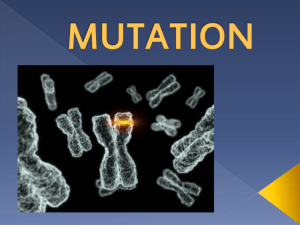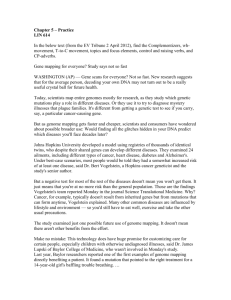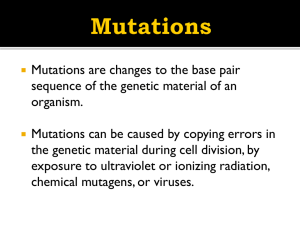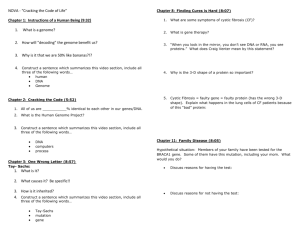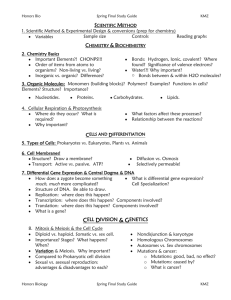HST.161 Molecular Biology and Genetics in Modern Medicine MIT OpenCourseWare .
advertisement
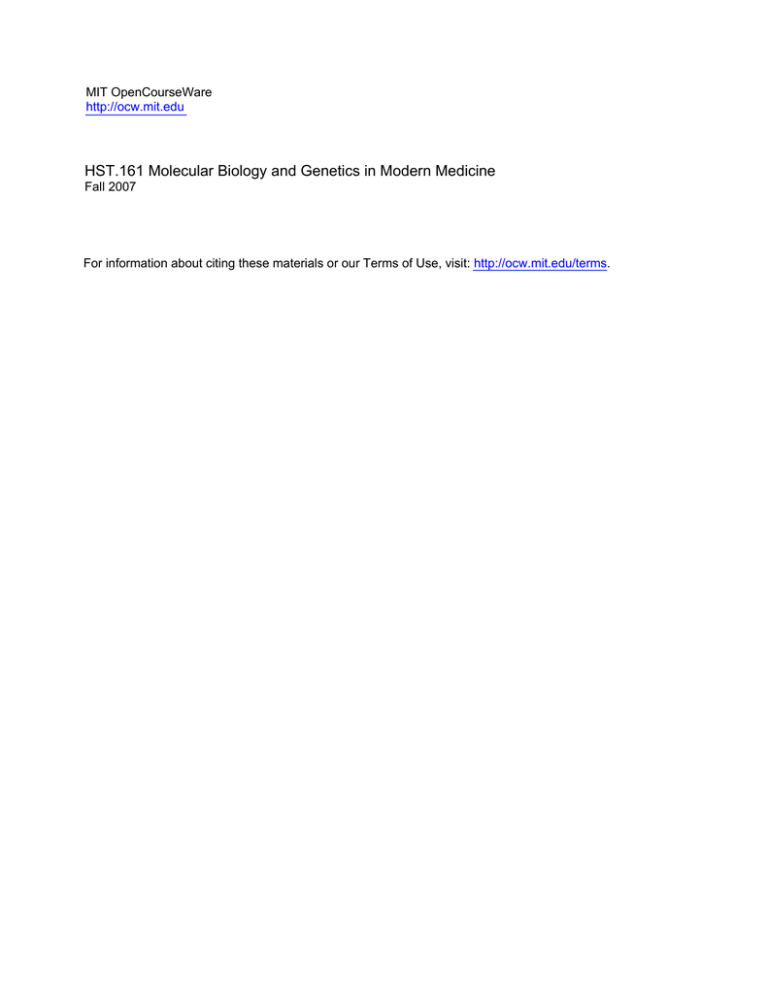
MIT OpenCourseWare http://ocw.mit.edu HST.161 Molecular Biology and Genetics in Modern Medicine Fall 2007 For information about citing these materials or our Terms of Use, visit: http://ocw.mit.edu/terms. Harvard-MIT Division of Health Sciences and Technology HST.161: Molecular Biology and Genetics in Modern Medicine, Fall 2007 Course Directors: Prof. Anne Giersch, Prof. David Housman Lecture 22 Genomic and epigenomic studies of human cancers Molecular causes of cancer tend to be mutations - mutated (activated) oncogenes - mutated tumor suppressors - GGT (glycine) in a number of kinases can be mutated in at least 6 different ways to cause cancer A second cause is amplification or deletion Targeted therapies: inhibitors of activated oncogenes Current drugs: - Gleevec (treats mutations) - Tarceva (treats a mutation) - ATRA (treats a translocation) - Herceptin/Iapatinib (treats an amplification) Example of a response to oncogene-targeted therapy: - drastic reduction in number and size of tumors in a lung cancer patient Eightfold improvement in sequencing technology over a six-year period SNP arrays: thousand-fold increase in mapped SNPs since 1999! Whole-genome sequencing now costs $50,000; it used to cost about $100 million. Unidentified Infectious Agents - new infectious diseases are constantly emerging - infectious causes are suspected for many chronic diseases, including some forms of cancer - technical advances have led to the discovery of chronic disease microbes Sequence-based Computational Subtraction: diseased tissue will contain both human and microbial DNA. When sequenced, the diseased DNA can be compared against the already-sequenced human genome, so the human and microbial portions can be identified (the human DNA is “subtracted out” to find the microbial additions). Cancer-causing mutations: How many cancer-causing mutations are there in a cancer cell? - there are certainly common mutations in a few genes - there are also rare mutations in many genes The statistical power required for mutation discovery requires many samples, but analyzing the whole genome would be too costly. The solution is to focus on drugtreatable genes, and a starting place is tyrosine kinases. Copy number alterations Cancer diagnosis and treatment: the future - pilot project: characterize 500 tumor/normal pairs of: o glioblastoma o squamous cell lung cancer o ovarian cancer - for: o copy number alterations o expression profiles o loss of heterozygosity o methylation patterns o point mutations in a selected set of genes Gene Therapy By Prof. Housman Why isn’t there more gene therapy? - adverse events in trials - hard to deliver into cells - not enough persistence of good results Graphs: Indications addressed by gene therapy trials: - 66.5%: cancer diseases - 9.1%: cardiovascular diseases - 8.3%: monogenic diseases - 6.5.%: infectious diseases - 3.8%: gene marking - 1.5%: neurological diseases - 0.9%: ocular diseases - 1.6%: other diseases - 1.7%: healthy volunteers Vectors Used in Gene Therapy Trials: - 24.7%: adenovirus - 22.8%: retrovirus - 18%: naked/plasmid DNA - 7.6%: lipofection - 6.8%: vaccinia virus - 6.4%: poxvirus - 3.5%: adeno-associated virus - 3.2%: herpes simplex virus - 1.3%: RNA transfer - 2.7%: other categories - 3%: unknown Gene types transferred in gene therapy clinical trials: - 20.3%: antigen - 18.9%: cytokine - 12%: tumor suppressor - 8.2%: growth factor - 8.2%: suicide - 7.9%: deficiency - 5.1%: receptor - 4.1%: marker - 3.7%: replication inhibitor - 8.6%: other categories - 2.9%: unknown Percentage of gene therapies that make it to Phase I, II, III, etc. - 61.2%: Phase I - 19.7%: Phase I/II - 15.7%: Phase II - 1%: Phase II/III - 2.4%: Phase III Retroviruses: - enveloped virus; acquire lipid bilayer from the cell - unique genome: diploid, synthesized by cell’s mRNA-processing machinery; associated with specific RNA whose function is to prime replication - only + strand RNA genome that does not serve as an mRNA early after infection Adenovirus: - non-enveloped, icosahedral virus - 41 distinct serotypes which cause acute diseases of multiple systems Adeno-associated virus: - In the Dependovirus genera - Requires help for productive infection - Icosahedral, ~20 nm diameter - Single-stranded DNA, ~5kb of either – or + polarity - 145 bp inverted terminal repeats with 125 palindromic sequence
